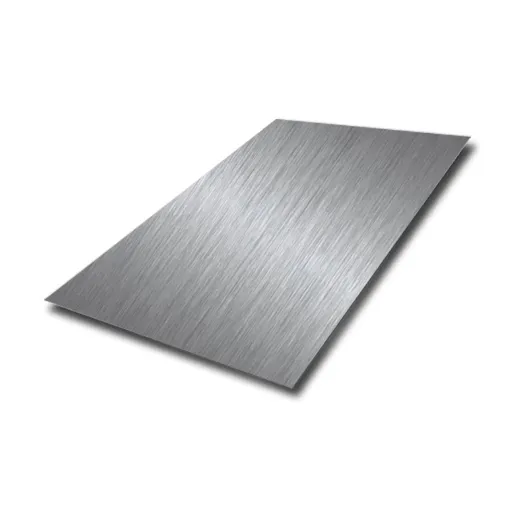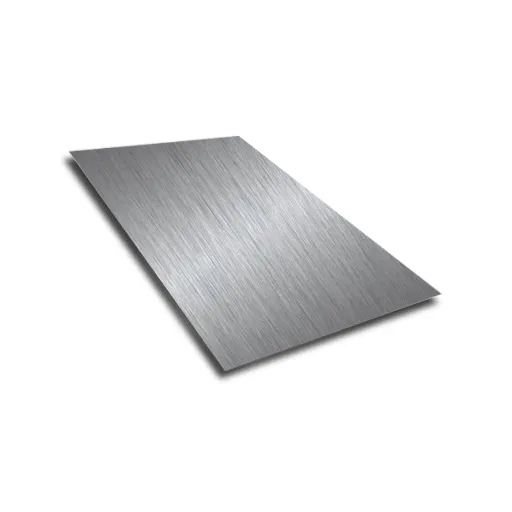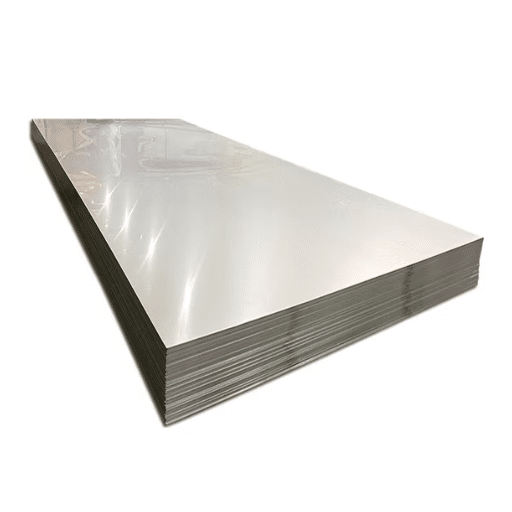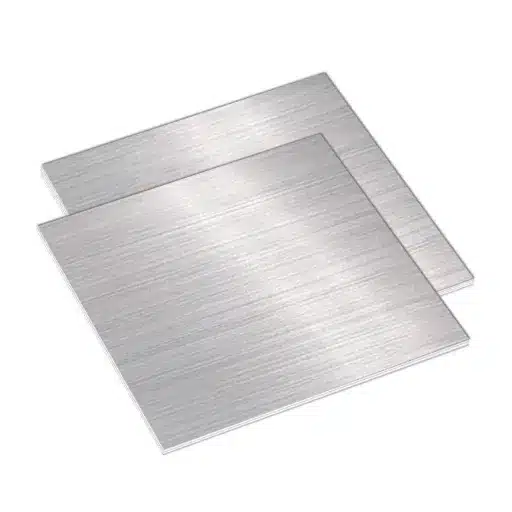When it comes to materials suitable for mechanical and architectural work, T304 stainless steel round bar stands out among the rest. It is admired not only for offering excellent resistance to rust, but also for its indestructible and flexible qualities.
T304 stainless steel round bar is used in various applications, ranging from infrastructure construction to product fabrication. Whether you’re a mechanical designer, manufacturer, or a sourcing personnel, you should understand the specifics, the joint and the constraints of T304 stainless steel round bar.
This manual is intended to provide some background information on the importance of T304 stainless steel round bar. We will go through such crucial issues as this material’s main properties, differences with the opposition, and what industries it is most commonly used in. After reading this post, you’ll be able to utilize T304 stainless steel round bars more effectively for your projects.
Understanding T304 Stainless Steel
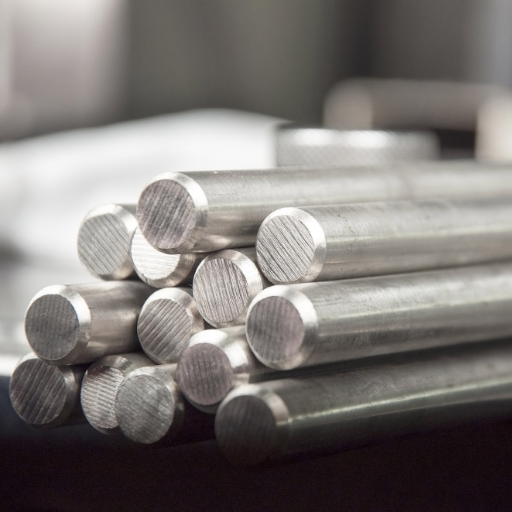
Stainless steel is known to be an austenitic alloy with mainly iron, chromium, and nickel. It should contain at least 18% chromium and 8% nickel. Because of the above proportions, T304 stainless steel is famous for its high resistance to any corrosion, despite the media used up to quite high acidity or moisture levels.
This particular metal is also characterized by an excellent surface finish, workability, and low magnetic characteristics in the annealed (soft) state, which presupposes wide application. Other than these aspects, T304 is found to have the impressive capability of working in temperatures close to 870°C (1,598°F) without developing cracks, and this is advantageous for both industrial and domestic uses.
T304’s ability to provide ample support to structures while additionally being safe in use within a temperature range, for example, up to 870°C, is one reason why it is a material relied upon particularly in constructions, manufacturing, as well as in the food industry.
Properties of T304 Stainless Steel
Chemical Composition
T304 stainless steel is composed primarily of the following elements (percentages by weight):
- Chromium (Cr): 18.0–20.0%
- Nickel (Ni): 8.0–10.5%
- Manganese (Mn): Up to 2.0%
- Silicon (Si): Up to 0.75%
- Carbon (C): Up to 0.08%
- Phosphorus (P): Up to 0.045%
- Sulfur (S): Up to 0.03%
- Iron (Fe): Balance
Mechanical Properties
- Tensile Strength (Ultimate): 515 MPa (75,000 psi)
- Yield Strength (0.2% Offset): 205 MPa (30,000 psi)
- Elongation at Break (in 2 inches): 40% minimum
- Hardness (Brinell): 201 HB maximum
Thermal Properties
- Melting Range: 1,400–1,450°C (2,552–2,642°F)
- Maximum Operating Temperature (for continuous service): 870°C (1,598°F)
- Thermal Conductivity (at 100°C): 16.2 W/m·K
- Coefficient of Thermal Expansion (20°C to 100°C): 17.2 µm/m·K
Physical Properties
- Density: The density of T304 is about 8.0 g/cm³ (0.289 lb/in³). This allows achieving a relatively light construction with high strength at the same time.
- Magnetic Properties: Normally T304 is non-magnetic after being annealed; however, slight magnetic properties can appear after processes of cold working, such as bending, flowing, etc.
Workability Features
- Weldability: These grades of steel also exhibit excellent ease of welding using such practices as TIG, MIG, or arc welding. In most instances it is not necessary to stress-relieve weldment by postweld heat treatment except possibly after solution annealing.
- Formability: T304, due to its capacity to withstand ductile deformation at high levels, is highly capable of being subjected to diverse designs without any undesirable distortions. This problem is widespread for instance in drawing, stamping, and other blanking operations.
Corrosion Resistance
The level of the so-called general corrosion due to the formation of surface layers, as well as the corrosive pitting processes at corrosive media, shall be taken into account when working in acidic, neutral and weakly alkaline environments. It can be used repeatedly without the risk of it rusting in the air or in the water. An increased electrical potential can activate the anodic dissolution of the protective passive film. At the same time, chloride in seawater may exacerbate localized corrosion of such structures.
Comparison with Other Stainless Steel Grades
| Property | T304 | T316 | T430 | T201 |
|---|---|---|---|---|
| Corrosion Resistance | Excellent in mild environments | Superior, especially in marine settings | Good, but less resistant to chloride | Moderate, reduced in salty conditions |
| Strength | High tensile strength | Comparable to T304, slightly higher yield | Moderate | High tensile, lower yield strength |
| Weldability | Excellent | Excellent | Good, with limitations | Excellent |
| Formability | Highly ductile | Good for most applications | Moderate, prone to cracking in deep forming | Good |
| Heat Resistance | Withstands up to 870°F | Withstands up to 1600°F | Lower resistance than T304/T316 | Similar to T304 |
| Magnetic Properties | Non-magnetic in annealed state | Non-magnetic in annealed state | Magnetic | Weakly magnetic |
| Cost | Affordable | More expensive due to added molybdenum | Economical | Lower cost compared to T304 |
| Applications | Food equipment, architecture | Chemical, marine, surgical industries | Automotive trims, appliances | Kitchenware, home accessories |
Applications of T304 Stainless Steel Round Bar
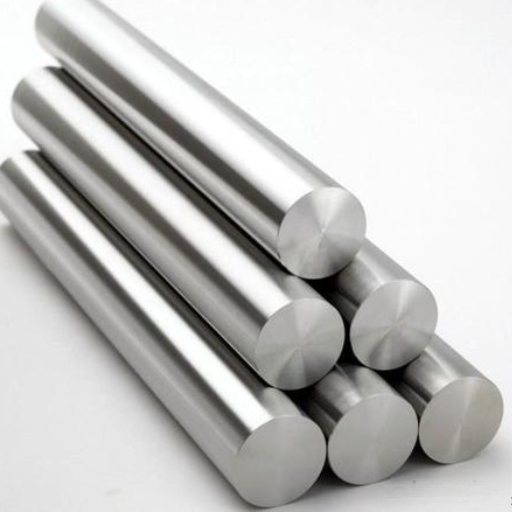
With such desirable features, round bars of T304 stainless steel are in use in many industries for reasons such as their being good for various applications and the fact that they are long lasting which does not involve corrosion. A range of applications includes:
Food Processing and Storage
T304 is the preferred material for the production of equipment and furniture for kitchens and restaurants, where cleanliness and the absence of harmful substances are of importance.
Architecture and Construction
This alloy is widely used in the production of load-bearing structures, railings, as well as decorative elements due to its high resistance and aesthetic properties.
Automotive Industry
Used in the production of fasteners, parts and assemblies which are supposed to work under tough conditions.
Medical and Pharmaceutical Equipment
Is used in surgical instruments and equipment where the material must maintain no rusting properties and without any contamination.
Marine Environments
Works well under moderately aggressive salt-water conditions often encountered in ship utilities & fixings as well as marina equipment.
The combination of the cost-to-performance ratio characteristic and overall durability makes it the stable T304 material where related equipment and structures are concerned.
Use in Construction
T304 stainless steel is in high demand in the manufacturing sector, specifically in the building industry due to the fact that it delivers a high level of resistance to wear and tear, corrosion and has a number of applications where it can be applied. In construction, it is often applied in the formation of structures such as beams, columns, and plates, among others, improving the property’s durability, and reducing repair or replacement cycles even in high-humidity conditions.
Its thermal expansion or contraction capability makes it possible for it to be applied in materials and structures that are subjected to variations in temperature. Moreover, T304 stainless steel is the standard since it passes all safety and environmental compliances to be adopted in the construction of infrastructure facilities, such as walkways, building bridges, and designing architectural works. Some facts showed that it was a very competitive material in its application as it would lead to a cost efficiency since it would not have to be replaced periodically and thus it was imperative that T304 stainless steel used in modern engineering and construction techniques.
Manufacturing Applications
Automotive Components
Automotive or Car parts, specifically those for exhaust systems, silencers, and converters, are easily made possible in stainless steel. It has enough strength to withstand high temperatures and chemical conditions. It is indicated by studies that as compared to galvanized options, the utilization of T304 steel for such components prolongs their life span by up to 25%.
Food Processing Equipment
Being widely used for installation inside food machines such as kneaders, transporters, and chutes with sanitary standards due to the hygienic properties that features corrosion resistance. According to available information, there is a 40% improvement in food-grade sanitation levels with the utilization of T304.
Pharmaceutical and Medical Devices
These are normally produced in surgical devices, such as general instrumentation, medical instruments and implants. It’s also considered safe due to unrejectable properties of T304. Such incomplete compatibility under heat also assures its long service life.
Chemical Processing and Storage
Some chemical combustible as well as decolorizing industries are the prime places where T304 is used for sensitive storage and processing equipment. It was found that T304 systems, when kept in ideal conditions, will serve the owners for at least 30 years.
Marine Engineering Benefits
Resistance to Saltwater Corrosion
It is reported that, with proper care, T304 stainless steel faces little risk of pitting in seawater surroundings for 20 years and possibly more. For example, not simple materials, where it is possible to mitigate the corrosion rate by as much as 90%, stainless steel corrosion is excluded (to a considerable extent).
Durability in Extreme Environments
With stainless steel it is possible to prevent deterioration of its mechanical properties even under severe marine conditions with temperatures from -50°F to 1200°F. The latter aspect has been proven through lab tests, which showed a tensile strength of up to 515MPa, which is satisfactory for offshore facilities’ load-bearing components, even for material T304.
Low Maintenance and Longevity
The ‘made for marine’ stainless steel does not require much in terms of maintenance over its period of use; this is good news for marine vessels, as it will reduce maintenance costs. Field deployments have resulted in a decreased total cost of 20%–30% over 15 years when marine stainless steel is used as a construction material in comparison with the reduced maintenance alternative.
Applications in Structural Components
Its strong and wear-resistant properties make it perfect and are very keenly used in the engineering of oil derricks, production platforms, and underwater pipelines. Fabrication of ships and boats would be incomplete without T304 and T316, owing to their favorability when involved in structures such as hulls, propeller shafts, and mooring systems.
Specifications and Sizes of T304 Stainless Steel Round Bar
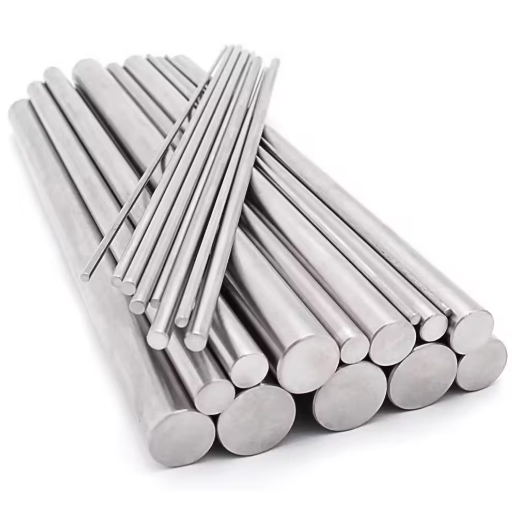
The T304 stainless steel round bars that are round bars meet even the most stringent standards of this field. High level of productivity in operation is guaranteed, whether applied in extremely challenging environments or not. Here is a summary of their main features and aftermarket dimensions:
Standard Specifications
- Material Grade: T304 (18-8 stainless steel composition with excellent corrosion resistance)
- Diameter Range: Common sizes range from 1/8 inch to 24 inches, with custom dimensions available upon request
- Length Options: The standard lengths are 12 feet and 20 feet but if the buyer desires the merchant shall provide cut to the measured length
- Surface Finish: It is customized to have either mill finish, polished or bright finishes to fit these functional necessities
- Tolerances: The materials used are slotted to fit the standard sizes and lengths according to ASTM A276 so as to maintain a responsible, uniform and quality
These specifications make T304 stainless steel round bars an ideal choice for applications requiring durability, versatility, and resistance to corrosion.
Standard Sizes and Lengths
With a wide range of outer diameters, T304 stainless steel round bars are produced for a number of industrial applications. Common sizes of bars range from 3mm to 600mm, which allows customers to obtain bars for both small-sized precision work and heavy structural purposes equally. Most commonly, bars are supplied in 6m and 12m long sections, which cover most fabrication and manufacturing requirements.
As an additional measure, the bars can be almost any length as custom cutting services are available to mass applications for an effective manner of saving expenses, but still managing to keep the product safeguarded. In addition, ensuring precise measurements of the intersecting parts guarantees their compatibility, which is essential when it comes to the ease of installation and operational use of different components.
Dimensions and Tolerances
When measuring the tolerances and dimensional specifications, accuracy is critical to the effective use of different parts for different purposes. Industrial standards like ASTM or ISO are common in the dimensional specifications but the tolerances are defined depending on: the kind of material; the process of production and the area of application of the part.
For example, with structural steel, the tolerances are often between ±0.1 mm and ±0.3 mm, such limits depending on the specific nature of the work to be done, while, for instance, for machined parts, the tolerances are normally in the range of ±0.01 mm owing to the levels of precision required.
Progress in engineering and controlled machines has allowed the manufacturing industry to work with high accuracy with no deviations between the different manufacturers. You find automated quality check machines are incorporated in most, if not all, manufacturing systems in production to ascertain that the components constructed are within the given measurements, and also they are within many other margins of error.
Besides, with the help of new age metrology aids such as laser line probes, there is a strict control on the dimensional errors, which is inevitable for aerospace, automotive, as well as medical device making. And even if achieving uniformity in machining seems futile, the incorporation of tolerance is of paramount importance in order to improve the efficiency and use in the process, enhancing the designs of goods and usefulness in mechanical tools towards the industrial end users.
Understanding Stock and Inventory
Competent inventory management plays an immense part in the effective organization of supply chain operations as it encourages both care and control within the scope of the organization. To be precise, stock entails all the goods and materials that are physically at hand and which can be bought and utilized or produced in the business, while inventory is generally used to refer to a wider spectrum of assets, including raw materials, work in progress, and finished goods.
Being able to address all of these variables calls for some quantitative methods where inventory control is frequently monitored, adjustments are made based on the changes that have occurred, and these methods are supplemented with forecasts to smooth the uncertainties.
Current technologies now employ sophisticated techniques such as the use of Enterprise Resource Planning (ERP) software and Inventory Management Systems to offer better tracking services and forecasting. These data systems combine procurement, sales, and distribution information so as to encourage the adoption of optimal stock replenishment, minimize warehousing costs, and keep stock close to demand.
Additionally, there are growing tendencies among firms that deploy Just-in-time (JIT) stock control measures because they help control waste, speed up cash flow in the system, and maintain price flexibility as the market changes. Finally, the efficient operation of all activities requires highly effective strategies for managing stock and inventory. This is a very good advantage in market competition because it complements the efficiency of the company as well as being able to meet the expectation of the customers.
Benefits of Using T304 Stainless Steel Round Bar
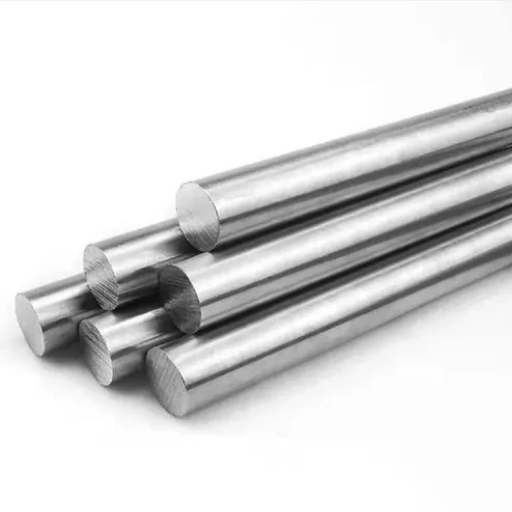
When tackling such problems, the T304 stainless steel is built to develop their behavior in the most challenging environments, including those prone to high humidity, aggressive chemicals or ultraviolet rays. It has an impressive performance under load that allows its use in applications of considerable loading, thus reducing the time between repairs and costs.
T304 stainless steel is also known for its ease of fabrication and welding which makes it an excellent option for the construction and manufacturing industry. Another benefit of this steel grade is that, it does not have magnetic properties and it is also highly resistant to heat, which means that it is used in many sectors such as, building, transportation and gastronomy. Thanks to smart design and high quality balance, one can expect stable outcomes in intensive environments.
Key Benefits Overview
- Superior Corrosion Resistance: Excellent protection against rust and chemical degradation
- High Strength-to-Weight Ratio: Strong yet lightweight construction material
- Excellent Formability: Easy to shape, bend, and fabricate
- Outstanding Weldability: Compatible with various welding techniques
- Temperature Resistance: Performs well in extreme temperature conditions
- Low Maintenance: Requires minimal upkeep over its lifespan
- Cost-Effective: Long-term value despite higher initial cost
- Food Safe: Non-toxic and hygienic for food processing applications
Corrosion Resistance
Great resistance to corrosion of T304 stainless steel is due to its high content of chromium and nickel. An oxide layer, the creation of which is catalyzed by the presence of oxygen, forms on the alloy’s surface and prevents it from reacting with chemicals and also other abnormally elevated temperatures. This explains why T304 is often applicable in any applications, including marine, chemical, processing, and food grade industries that expose the equipment to corrosive agents.
In addition, it has also proven to be an excellent precaution against pitting and crevice corrosion, which is particularly effective in health-critical environments where the presence of chlorides or any other aggressive elements is usually inevitable. This allows T304 to be used for most environmental conditions of varying temperature and moisture.
Most interesting is the fact that one can improve the corrosion resistivity of T304 stainless steel beyond that of the ordinary carbon steels and some of the lower-class stainless steels. With the materials, however, a paradigm shift has been seen in the known levels of stress rupture of the materials under different temperature and humidity ranges. On the contrary, it is better than the traditionally known carbon steels and most of the low grade stainless steels and can be used best for critical applications.
Durability and Strength
Pertaining to its austenitic structure, the chromium and nickel contents in the T304 stainless steel are those that give it a reason to be strong and durable as they help to enhance the mechanical properties, therefore retard the deformation of the steel material as the load is applied. The research that has been conducted so far demonstrates that the T304 steel strain hardening properties reach an ultimate breaking tensile strength of 515 MPa and upper yield strength of 205 MPa, showing that it is well-suited for use in structures requiring high strength.
Besides enduring stress, break elongation that is measured to be 40% demonstrates that it’s a material of high toughness against fracture. Such qualities, along with exceptional elastic-plastic capabilities, help to provide the necessary stability to T304 even under conditions where the system is subjected to elastic and viscoelastic systems. In the project regarding exceptional quality and longevity of construction, manufacturers, sea and water, or oil and gas areas, it is this qualitative category of stainless steel.
Cost-Effectiveness in the Long Run
T304 stainless steel, despite usually requiring a higher initial cost compared to other materials, has shown greater cost-effectiveness over a period of time due to sustained mechanical and chemical resistance as well as less frequent maintenance and corrosion works. Evaluative literature unequivocally proves that the better expected lifecycle makes constant remodeling or maintenance inappropriate when such installations have to contend with factors like humidity, chemically aggressive dissolutions, and high and low temperatures.
For example, in environments such as the sea, etc. T304 stainless steel is more effective than the weaker options because it is the only T304 that is able to provide all the required properties in full measure. This is convenient for preventing drastic failures of the vessels and, hence, the prevention of unnecessary expenditures and delays. Furthermore, its durability makes it environmentally friendly and it can also help recover in the end, such as producing another item that is already in a useful state and is returned to the cycle of materials.
Key Considerations for Sourcing T304 Stainless Steel Round Bar
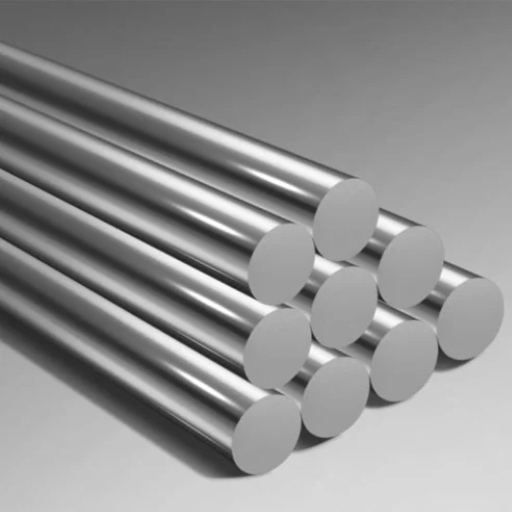
Essential Sourcing Factors
When sourcing T304 stainless steel round bars, several critical factors must be evaluated to ensure you receive quality materials that meet your project requirements and specifications.
Material Certification
Acquire the T304 Stainless Steel Round Bar from trustworthy suppliers that deliver adequate material certificates. These papers, among other things, present evidence of the composition and conformity with industry norms like ASTM A276 or A479.
Surface Finish and Tolerance
Provide information on the required machined surface finish and dimensional tolerance for the particular function. For a case in point, a light or fine tolerance machining would be required for work on machinery or medical applications.
Supplier Reputation
All the reputable suppliers of stainless steel grade T304 must have segmented into the industry. This will be a guarantee of quality products. Certain indicators, like ISO 9001, should be checked to ascertain that strict quality measures exist.
Corrosion Resistance Requirements
Evaluate the application of T304 stainless steel round bar in your particular environment – especially with regard to corrosion. Use alternative methods or enhancers should there be a case of severe conditions around the area of use.
Availability and Lead Times
Please review the availability of any materials and the approximate time it will for them to be made available for your use so they are ready on time when working on your project. Avoiding a stock shortage will prevent the occurrence of delays that could damage the production process or other such operations.
Pricing and Volume Discounts
For instance, it is also vital to compare quotes from the various suppliers and request for discounts on bulk purchases. Long-term value, especially for costs in business industries can be viewed from the perspective of low cost and quality.
Understanding Cost Factors
Material specification is very important in the cost management of an entire project. There is always a high associated cost with high performance materials because of their life span, ability to last, and their ability to function under harsh conditions. For example, titanium or other special stainless steels are much more costly than common stainless steel and are used in aggressive environments but offers better performance.
As well, ensuring conformity to the industrial norms might push the cost of the material higher. This is because these standards come with the required conditions for the materials and the quality of such materials which may need to be assured throughout or after the fabrication of the material. Such requirements notably require enhanced testing and inspection procedures that drive the costs of the operations higher but provide greater integrity and effectiveness.
The correct selection of material building specifications is a considered judgment looking into the application and usage of the building type, its outdoor influences, and long-term use when both direct and indirect costs are at issue from the stages of laying the foundation until demolition of the building.
Evaluating Product Quality
There is a considerable study that has to be put into testing the quality of the commodity, by analysis of many critical criteria measures to ensure the product meets all the effectiveness, is durable, and also meets the consistency aspect. Several of these metrics include the physical stability of the materials used, accuracy in size as well as adapting the product to meet a particular industry’s standards.
For instance, evaluation of the integrity of the items may be achieved through nondestructive and chemical analysis. Alternatively, machines may be programmed to perform repetitive, exact tasks without any defects arising. Field or lifecycle testing attempts to assess the useful life and how well a product can handle pressure without blowing up. Introducing the previous performance record of a substance or sensitively designed machines and devices allows for a thorough implicative analysis of the entire process. It shall set out or define the product operational requirements of any product while taking account of the product safety and the relevant legal requirements.
Reference Sources
-
- Summary: This page provides detailed specifications for T304 stainless steel round bars, highlighting their strength, corrosion resistance, and versatility. It lists applications such as marine, food, and chemical environments. The bars are available in various diameters and lengths, with mechanical properties like tensile strength of 85,000 psi and yield strength of 34,000 psi. The material is easy to weld and moderately machinable.
-
- Summary: This site emphasizes the dual certification of 304/304L stainless steel round bars, conforming to AMS-5639 and ASTM A276 standards. It details the chemical composition, including 18-20% chromium and 8-10.5% nickel, and highlights its corrosion resistance in industrial atmospheres. The page also offers a stock calculator for custom orders.
Frequently Asked Questions (FAQs)
Q: What is T304 stainless steel round bar?
Q: What are the specifications for 304 stainless steel round bars?
Q: How do I buy stainless round bar products online?
Q: What are the advantages of using T304 stainless steel round bars?
Q: What is the difference between 304 and 316 stainless steel round bars?
Conclusion
Because of its very high resistance to corrosion and general applications wherein strength and versatility are required, the T304 stainless steel round bar can be viewed as one of the best options. In terms of mechanical properties, workability, and price, it has a unique combination; therefore, it imparts utility for processes varying between food processing and marine engineering.

